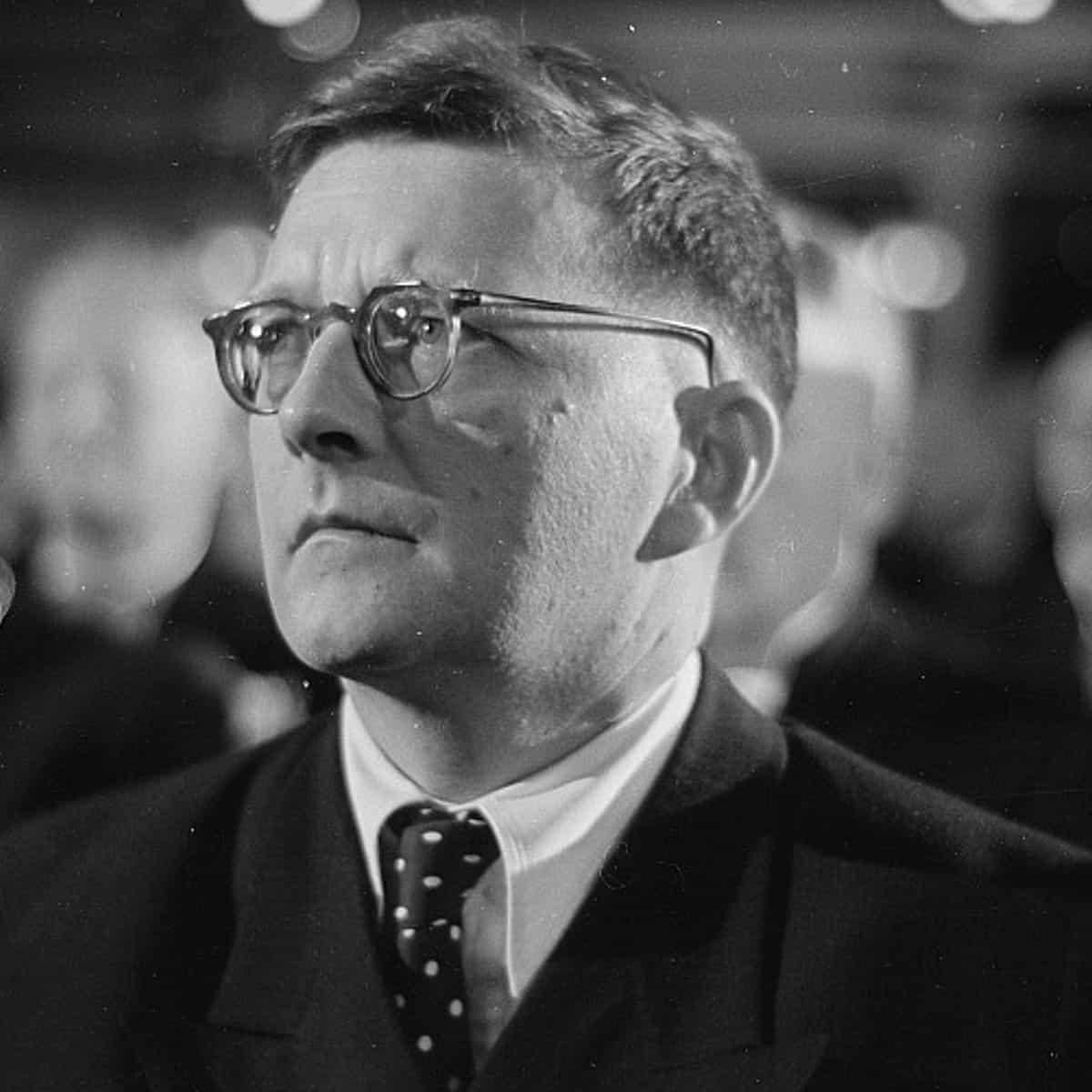
Shostakovich wrote his Fifth String Quartet in the fall of 1952, but it remained in manuscript, unperformed, for over a year—and for very good reasons. Not only were these some of the darkest years of the Cold War, they were also the paranoid final years of Stalin’s repressive regime. Four years earlier, at the 1948 Congress of the Union of Soviet Composers, Stalin’s thought-control police had unleashed a killing attack on leading Soviet composers that left artistic expression in Russia moribund. Accused of writing music that “dwells too much on the dark and fearful aspects of reality,” Shostakovich had been forced to read a humiliating apology and to promise to amend his ways. On the surface, he seemed to do that, composing a series of patriotic cantatas and film scores crafted specifically to please Soviet officialdom. The “real” Shostakovich went underground: over the next few years he continued to write the music he wanted to, but he kept it in his desk, waiting for more favorable times. Those times seemed to come with the death of Stalin on March 5, 1953, and it was in this slightly liberalized atmosphere that Shostakovich chose to bring out his suppressed works. The Fifth String Quartet was premiered in Moscow on November 13, 1953, by the Beethoven Quartet.
Preview on Spotify:
The Fifth Quartet is one of Shostakovich’s darkest. It is a big work (its three interconnected movements last a half hour) and a dramatic one. An unusual level of violence runs through this quartet: the development sections of the outer movements are long and abrasive, the music speaks a surprisingly dissonant language, and it finally reaches an ambivalent conclusion that resolves none of its tensions. Shostakovich was probably wise to hold this music back—this quartet could not possibly have been accepted during this bleak period. It is not simply a direct violation of the canons of Socialist Realism—it is a somber work even by the standard of his own music
At the very beginning of the Allegro non troppo, Shostakovich offers the three-note cell that will saturate this quartet: the violins’ three rising notes will recur in a variety of forms and perform a number of musical functions here, just as they do in such contemporary scores as the Tenth Symphony and Sixth Quartet. This opening material proceeds through a very aggressive extension (both violins are in fingered octaves at points), so that the second subject arrives as balm: it is an almost innocent waltz-tune, marked espressivo and first heard in the second violin. Shostakovich even offers a third theme, with the first violin’s duplet pulse cutting across the viola’s steady accompaniment. Though the development begins quietly, it quickly turns violent, with thick textures, meters that shift by the measure, and grating dissonance. The rising three-note cell from the beginning appears in many forms here (including retrograde presentation) before the drama finally plays itself out and the movement comes to a surprising close: beneath the first violin’s high F (which goes on for 26 measures), the music stumbles to the close on fragments of its themes.
Shostakovich Saturday Morning Series
4 Saturdays at 10am
1/21, 2/4, 3/4 and 5/13, 2017
Herbst Theatre
$55/$45/$30
TICKETS
MARCH 4:
Quartet No. 5 in B-flat Major, Op. 92
Quartet No. 6 in G Major, Op. 101
MAY 13:
with Roger Woodward, piano
Piano Quintet in G minor, Op. 57
Quartet No. 7 in F-sharp minor, Op. 108
That high F takes us without pause into the impressive central movement, initially marked Andante. The viola leads the way here, its first three notes outlining this quartet’s melodic cell. One of the most striking aspects of this movement is its sound. All four instruments are muted throughout, and after the turbulence of the opening movement, this brings an icy poise, particularly in its wide, spare textures. Some of this wintry sound comes from the unison writing: at points Shostakovich sets the three upper voices in octaves, playing this pure, clear texture against the deep sound of the cello. An Andantino in 2/4 moves ahead a little more fluidly, with the first violin singing its somber song above the cello’s syncopated pulses; Shostakovich alternates these sections as the movement makes its way to a subdued close.
Mutes come off at the beginning of the last movement, which follows without pause. Second violin launches the Moderato introduction with another theme derived from the three-note cell, and the viola takes the lead at the Allegretto. The generally light spirit of this section, one of those tart little Shostakovich waltzes, evaporates in the development, which invokes the furies of the opening movement. The ending is a complete surprise. Shostakovich brings back themes from the earlier movements, gradually the Andante section of the middle movement reasserts itself, and it is on the spare textures and muted sound of that somber music that Shostakovich’s Fifth Quartet glides into icy silence.
